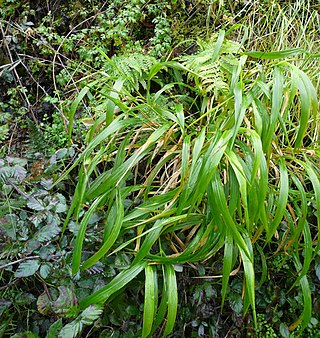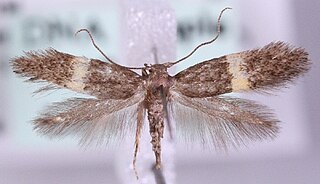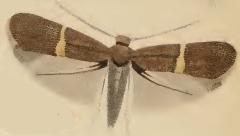
The small skipper is a butterfly of the family Hesperiidae.

Brachypodium sylvaticum, commonly known as false-brome, slender false brome or wood false brome, is a perennial grass native to Europe, Asia and Africa. Its native range includes most of Europe, northwestern Africa, Sudan and Eritrea, Western and Central Asia, the Indian subcontinent, China, Korea, Japan, Malesia, and New Guinea.

Brachypodium pinnatum, the heath false brome or tor-grass, is a species of grass with a widespread distribution in temperate regions of the Northern Hemisphere. It typically grows in calcareous grassland, and reaches 70–120 centimetres (28–47 in) tall. The flowerhead is open, with 10 to 15 erect spikelets.

Brachypodium distachyon, commonly called purple false brome or stiff brome, is a grass species native to southern Europe, northern Africa and southwestern Asia east to India. It is related to the major cereal grain species wheat, barley, oats, maize, rice, rye, sorghum, and millet. It has many qualities that make it an excellent model organism for functional genomics research in temperate grasses, cereals, and dedicated biofuel crops such as switchgrass. These attributes include small genome diploid accessions, a series of polyploid accessions, a small physical stature, self-fertility, a short lifecycle, simple growth requirements, and an efficient transformation system. The genome of Brachypodium distachyon has been sequenced and published in Nature in 2010.

Brachypodium is a genus of plants in the grass family, widespread across much of Africa, Eurasia, and Latin America. The genus is classified in its own tribe Brachypodieae.

Hipparchia statilinus, the tree grayling, is a butterfly of the family Nymphalidae.

Elachista subalbidella is a moth of the family Elachistidae found in Europe and North America.

Elachista adscitella is a moth of the family Elachistidae found in Europe.

Elachista albifrontella is a moth of the family Elachistidae found in Europe.

Elachista gangabella is a moth of the family Elachistidae. It is found in all of Europe, except the Iberian Peninsula.

Elachista bisulcella is a moth of the family Elachistidae that is found in Europe.
Bromus fasciculatus is a species of herb in the family Poaceae.
Arundo plinii is a species of herb in the family Poaceae.
'Brachypodium distachyon', the purple false brome, is a species of annual grass in the family Poaceae. They have a self-supporting growth form and simple, broad leaves. Individuals can grow to 14 cm tall.

Catapodium marinum, the sea fern grass, is a species of annual herb in the family Poaceae. They have a self-supporting growth form and simple, broad leaves. Individuals can grow to 22 cm tall.

Euphorbia terracina, commonly known as the Geraldton carnation weed and False caper, is a species of perennial herb in the family Euphorbiaceae. It has a self-supporting growth form and simple, broad leaves. Flowers are visited by Lipotriches brachysoma, Lipotriches natalensis, Lipotriches crassula, and Nomia bouyssoui. It produces small, three lobed fruits, with each lobe containing one seed.
Polypogon maritimus, the Mediterranean rabbitsfoot grass, is a species of annual herb in the family Poaceae. They have a self-supporting growth form. Individuals can grow to 0.17 m.

Polypogon viridis, the beardless rabbitsfoot grass, is a species of perennial grass in the family Poaceae. They have a self-supporting growth form and simple, broad leaves. Individuals can grow to 0.43 m. They are native to southern Europe, Macaronesia, North and East Africa, and Asia.
Sphenopus divaricatus is a species of grass in the family Poaceae.












